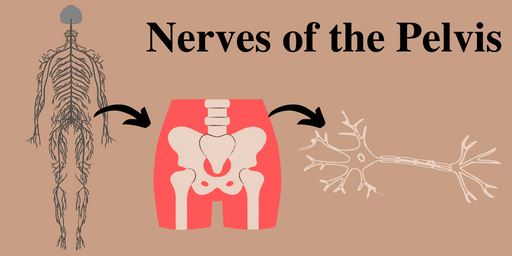Nerves of the Pelvis Nerves of the PelvisThe intricate nerve supply of the pelvis plays a critical role in the function of the reproductive and urinary systems.
Understanding the anatomy and physiology of pelvic nerve supply is essential for nursing professionals, especially when caring for patients undergoing gynecological surgeries, experiencing pelvic pain, or facing complications related to childbirth. This article explores the nerves of the pelvis, their anatomical descriptions, and important nursing considerations.
Nerves of the Pelvis
Nerve Supply of the Vulva and Perineum
The pudendal nerve is the primary nerve that innervates the vulva and perineum. It arises from the second, third, and fourth sacral nerves (S2-S4) and provides both sensory and motor functions. As the pudendal nerve travels along the outer wall of the ischiorectal fossa, it gives off several branches:
- Inferior Rectal Nerve: Supplies the anal sphincter and the surrounding area, providing sensation to the anal region.
- Perineal Nerve: This branch innervates the perineal muscles and provides sensory innervation to the vulva. It also plays a role in the motor supply to the superficial perineal muscles and the anterior part of the external anal sphincter.
- Dorsal Nerve of the Clitoris: This nerve is purely sensory, supplying the clitoris and contributing to sexual arousal and sensation.
In addition to the pudendal nerve, sensory fibers from the mons pubis and labia travel through the ilioinguinal and genitofemoral nerves, connecting to the first lumbar nerve root. The posterior femoral cutaneous nerve carries sensation from the perineum to the small sciatic nerve, thus linking to the sacral nerves (S1-S3).
Nerve Supply of the Pelvic Viscera
The pelvic viscera, including the bladder, uterus, vagina, and rectum, receive their nerve supply from both the sympathetic and parasympathetic nervous systems.
- Sympathetic Supply: The sympathetic nerve fibers originate from the pre-aortic plexus, connecting with the superior hypogastric plexus located at the level of the last lumbar vertebra. This plexus divides and sends fibers to the pelvic viscera, influencing functions such as vasoconstriction and sexual arousal.
- Parasympathetic Supply: Parasympathetic fibers arise from the second, third, and fourth sacral nerves. These fibers join the uterovaginal plexus, innervating the bladder, uterus, vagina, and rectum. The uterovaginal plexus contains ganglion cells and is believed to have motor functions influencing the pelvic viscera.
Anatomical Description of Related Structures
The pelvic region comprises several important anatomical structures that interact closely with the nerve supply:
- Uterus: The uterus weighs approximately 70 grams in adults and consists of three layers: the peritoneum, myometrium, and endometrium. The cervix is narrower than the body of the uterus and has a different epithelial composition, which is crucial for understanding cervical health and disease.
- Ovaries: The ovaries are intraperitoneal structures not covered by peritoneum. They are supplied by the ovarian arteries, which arise from the abdominal aorta.
- Pelvic Floor: The pelvic floor is primarily supported by connective tissue and the levator ani muscles, which play essential roles in pelvic stability and organ support.
- Urethra: The urethra runs approximately 1 cm lateral to the supravaginal cervix, making it important for nurses to consider when assessing urinary function and pelvic anatomy.
Nursing Considerations
Understanding the pelvic nerve supply is essential for nurses who care for patients in various clinical settings, including obstetrics, gynecology, urology, and pelvic surgery.
Assessment
Nurses should perform thorough assessments of pelvic health, including:
- History Taking: Inquire about any pelvic pain, urinary incontinence, sexual dysfunction, or previous surgeries that may affect nerve function.
- Physical Examination: Conduct pelvic examinations to assess anatomical structures, identify any abnormalities, and evaluate muscle strength and tone.
Patient Education
Nurses play a crucial role in educating patients about their pelvic health and the implications of nerve supply. Important topics include:
- Understanding Nerve Function: Explain the roles of the pudendal nerve and the autonomic nervous system in bladder and bowel control, sexual function, and childbirth.
- Post-operative Care: Educate patients about potential changes in sensation or function following pelvic surgery. Discuss expected recovery trajectories and the importance of pelvic floor exercises.
Management of Complications
Nurses should be aware of complications related to pelvic nerve damage, including:
- Pelvic Pain: Develop pain management strategies tailored to the individual’s needs, considering both pharmacological and non-pharmacological options.
- Urinary and Fecal Incontinence: Assess the severity and impact of incontinence on the patient’s quality of life. Implement appropriate interventions, including bladder training and pelvic floor rehabilitation.
- Sexual Dysfunction: Provide support and resources for patients experiencing sexual dysfunction post-surgery or due to nerve injury. Refer patients to specialists when necessary.
Multidisciplinary Approach
Collaboration with other healthcare professionals is vital for providing comprehensive care to patients with pelvic nerve concerns:
- Physical Therapists: Collaborate with pelvic floor therapists to develop rehabilitation programs that strengthen pelvic muscles and improve function.
- Psychologists/Counselors: Refer patients to mental health professionals if they are struggling with the emotional impacts of pelvic health issues, such as anxiety or depression related to pain, dysfunction, or changes in body image.
Conclusion
Understanding the pelvic nerve supply and its implications for patient care is essential for nursing professionals. By recognizing the anatomical, physiological, and clinical aspects of pelvic health, nurses can provide comprehensive assessments, effective education, and compassionate care. As healthcare providers, nurses play a pivotal role in helping patients navigate the complexities of pelvic health, promoting overall well-being and quality of life.
Read More:
https://nurseseducator.com/dialectic-teaching-with-team-based-learning/
https://nurseseducator.com/high-fidelity-simulation-use-in-nursing-education/
First NCLEX Exam Center In Pakistan From Lahore (Mall of Lahore) to the Global Nursing
Categories of Journals: W, X, Y and Z Category Journal In Nursing Education
AI in Healthcare Content Creation: A Double-Edged Sword and Scary
Social Links:
https://www.facebook.com/nurseseducator/
https://www.instagram.com/nurseseducator/
